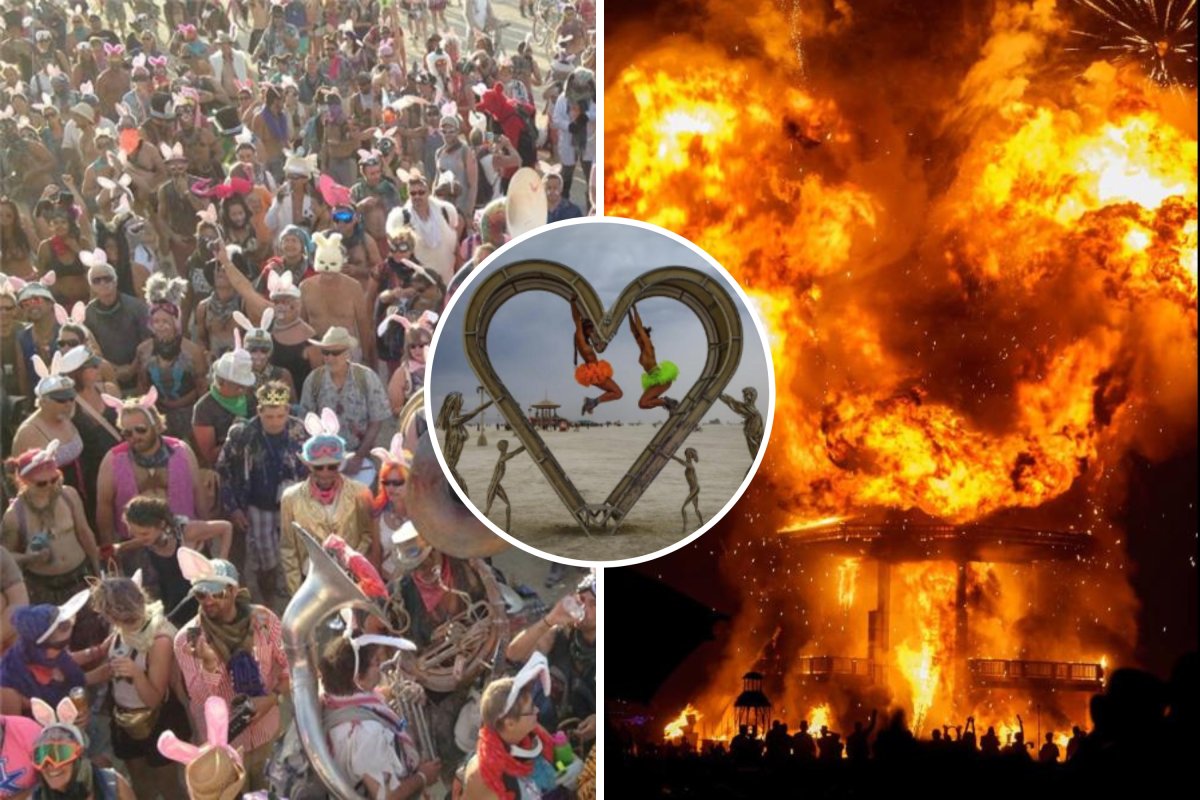The Burning Man Project confirmed the death of an attendee in a statement released on Sunday, detailing that emergency services responded to a report of an unresponsive individual at 11:29 a.m.
Attendee’s Death Casts a Shadow on Day One
Despite immediate life-saving efforts, the individual could not be revived. Pershing County Sheriff Jerry Allen later identified the deceased as 39-year-old Kendra Frazer. The incident, which marked the first reported death at this year’s event, is currently under investigation. Authorities are awaiting the results of an autopsy and toxicology screening to determine the cause of death.

In their statement, the Burning Man Project expressed condolences to the family and friends of the deceased, emphasizing that the safety and well-being of their community is a top priority. They assured full cooperation with local authorities in the ongoing investigation but refrained from providing further details out of respect for the grieving family’s privacy.
Weather-Related Delays Complicate Festival Start
In addition to the tragic death, the opening day of Burning Man was marred by weather-related delays. Approximately 20,000 attendees faced a 12-hour wait as rain and muddy conditions forced organizers to postpone the opening of the gates. Situated in Nevada’s Black Rock Desert, the festival is no stranger to extreme weather. Just a year prior, heavy rainfall had created similar conditions, washing away temporary roads and leaving many attendees stranded. This year’s delays were another reminder of the challenges posed by the desert environment. Despite the rocky start, the festival is expected to draw more than 70,000 participants over the week. However, this number is slightly down from previous years, with 2024 marking the first year since 2011 that tickets went unsold.
The Essence and Evolution of Burning Man
Burning Man, which began in 1986 when founders Larry Harvey and Jerry James burned a human-shaped sculpture on Baker Beach in San Francisco, has evolved into a cultural phenomenon. By the 1990s, the event had outgrown its original location and was moved to the Black Rock Desert in Nevada. Today, the festival attracts tens of thousands of “Burners” who come together to create a temporary, self-sustaining community built on principles of self-expression, art, and the rejection of consumerism. Burning Man is unique in that it operates on a gift economy—attendees barter, trade, or give away goods and services rather than using money. Participants construct elaborate villages, a medical center, an airport, and performance stages, all intending to foster creativity and community.
:max_bytes(150000):strip_icc()/burning-man-082624-2045c87781a04295a03795c169bceb55.jpg)
The festival’s ethos is rooted in leaving no trace, with efforts to dismantle the temporary city and leave the desert as it was found. However, the event has also faced challenges over the years, including issues related to drug use, arrests, and reports of sexual assault. As the 2024 event continues, attendees and organizers alike will be navigating both the physical and emotional impacts of the opening day’s challenges. Despite the difficulties, the spirit of Burning Man endures, drawing people from all over the world to participate in its unique and transformative experience.
